Round Tables in China: How Round Tables Made Their Way into Chinese Dining Halls
Now a Chinese restaurant staple, round tables were used for dining in China only since the Qing dynasty. Behind this fact are important shifts in sociocultural norms.
Written by Kyoungjin Bae
Published on 17/06/2019
Imagine going out to dine at a Chinese restaurant with your family or friends. Imagine heaping platters and an array of dishes. As food and drinks circulate, so would the lively conversation. In the midst of this imagination, you might be picturing a round table, perhaps one with a lazy Susan — the revolving tray that makes sharing more convenient. Nowadays, such tables are one of the most common objects we can see in old-style Chinese restaurants. In the bustling dim sum eateries in Hong Kong, in the all-you-can-eat Chinese food restaurants in US Chinatowns, and even in the fine dining places that boast tablecloths, round tables are often the tables of choice.
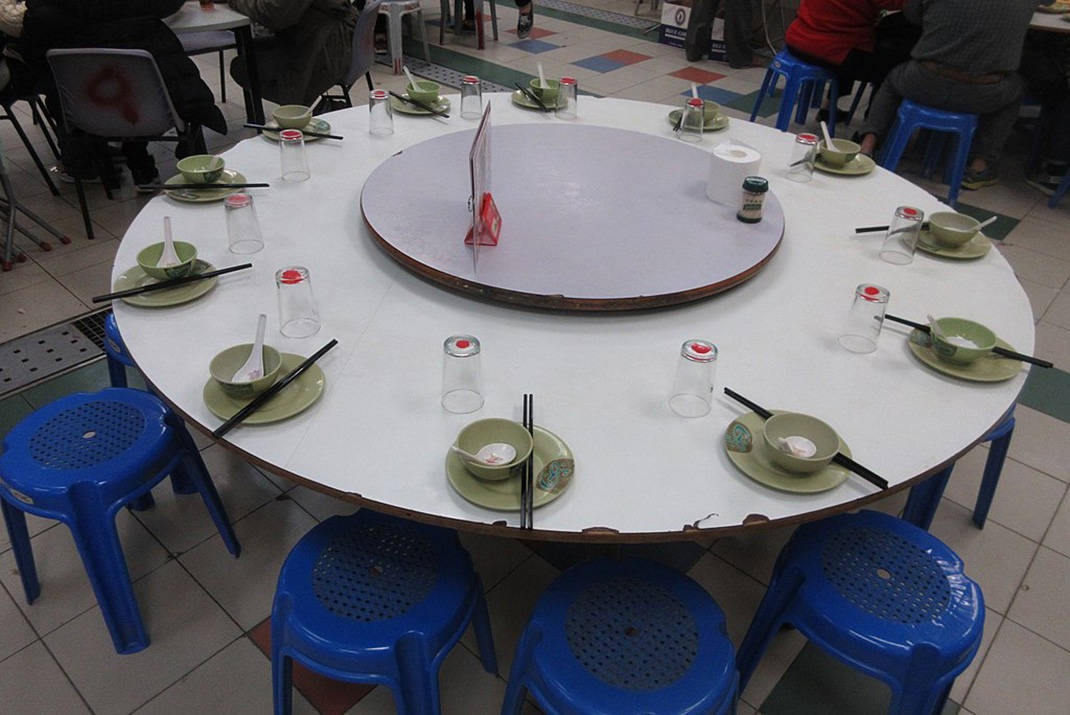
Such tables possess a rich set of meanings in Chinese material culture. For example, a period room titled “Guangdong’s history and culture” at the Guangdong Provincial Museum in Guangzhou showcases a round table in a traditional wedding banquet. On the table is displayed a Cantonese ceremonial meal called Jiu da gui or “nine large dishes.” The carefully choreographed symbols of a wedding — the red satin wall hanging, the embroidered dragon and phoenix that represent a married couple, and the golden character xi, referring to conjugal bliss — all contribute to the atmosphere of festivity and conviviality produced by the table. They also point to the close association between round tables and traditional social and cultures practices in China.
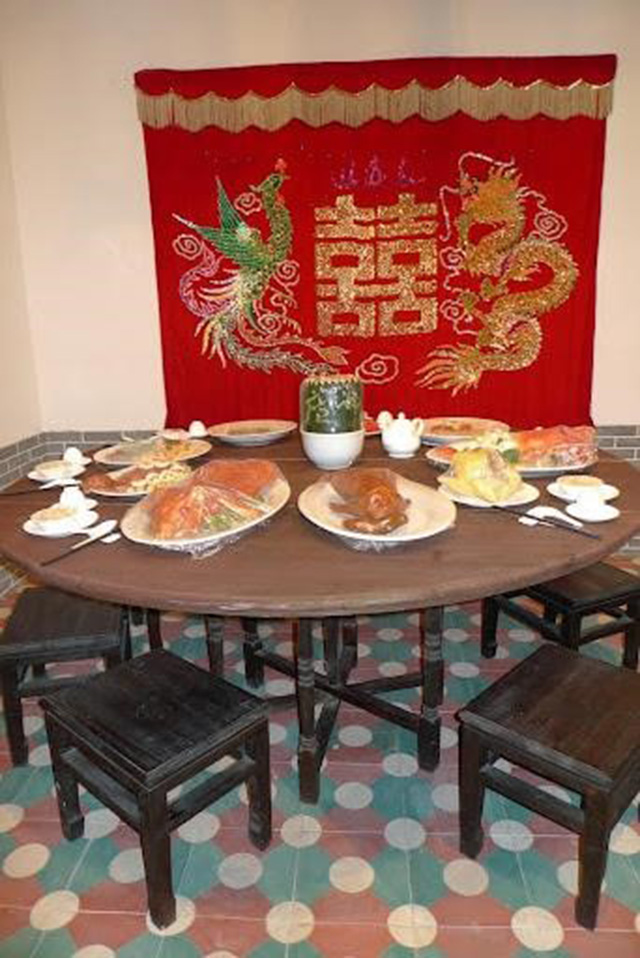
Yet round tables of the past are not just fossilized museum pieces; many of them retain – and produce new – connections to the present through auctions, refurbishments, and even forgery. In the rear alleys of big cultural centers like Beijing, Shanghai, Guangzhou, and Hong Kong, we can often see old round tables being amended for auctions and collectors. They might glide into an antique shop, a vantage cafe, or a room of classical tastes. Through this, they accrue new values and memories. While they evoke a nostalgia for a bygone era on the one hand, when refurbished with chemical varnishes and by electronic tools, round tables are also cultural amalgams that connected different historical eras.
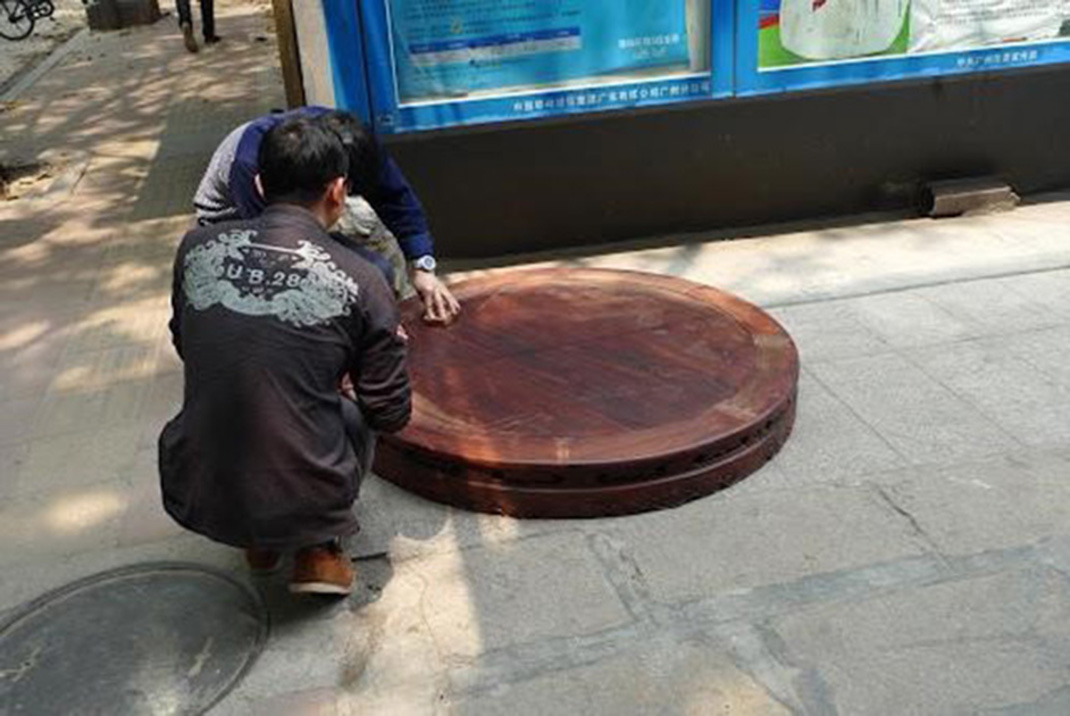
But since when did Chinese people dine at round tables? This question might sound bizarre, since they are so ubiquitous in our daily lives. Despite our familiarity with them, however, it has not been long since humans started using round dining tables. Such tables, moreover, emerged not simply in response to changes in eating habits but also in response to changes in norms of sociability. Sociability, of course, is not a neutral concept. It is different in different times and places. In the West, it is thought that a round dining table was a product of early modern times, where nuclear families appeared and the senses of the self and the private were enhanced.
In China, round tables began to be used around the beginning of the Qing dynasty (1644-1911), and they were accompanied by equally important shifts in social norms. Until the Ming dynasty (1368-1644), dining took place on square or rectangular tables. For formal banquets, multiple rectangular tables were set up alongside the wall in a parlor or pavilion. Guests and hosts were seated individually facing the center of the room where various performances took place. In this configuration, little physical interaction occurred on a single table. Instead, the entire room was an arena for orchestrated sociability. In informal occasions, square tables were often used to serve the gatherers. Promoting a more private and intimate environment, these tables were nicknamed ba xian zhuo, or tables of eight immortals. This nickname invoked the unrestrained fondness of drinking and conviviality associated with Daoism.
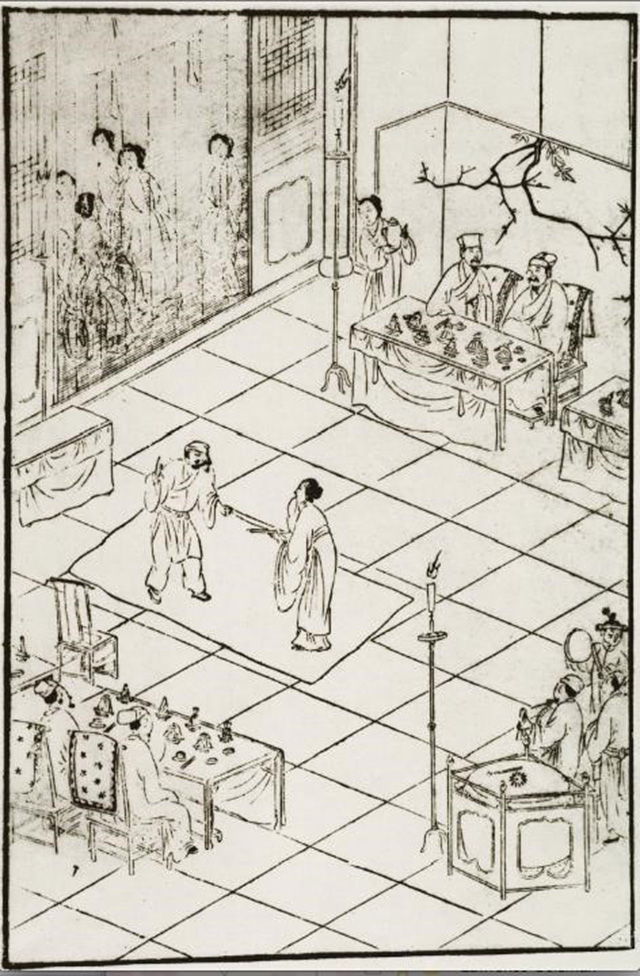
If there were already angular tables that satisfied the variety of dining customs common in China, how did the round table come to be used alongside square and rectangular ones? How did this newcomer become legitimate and even popular? In fact, circular tables did exist prior to the Qing period, but they were not used for dining. Until the Ming period, tables called round tables were often semicircular tables which formed a circle when put together. Such tables were used as side tables to display flower vases and other decorative objects.
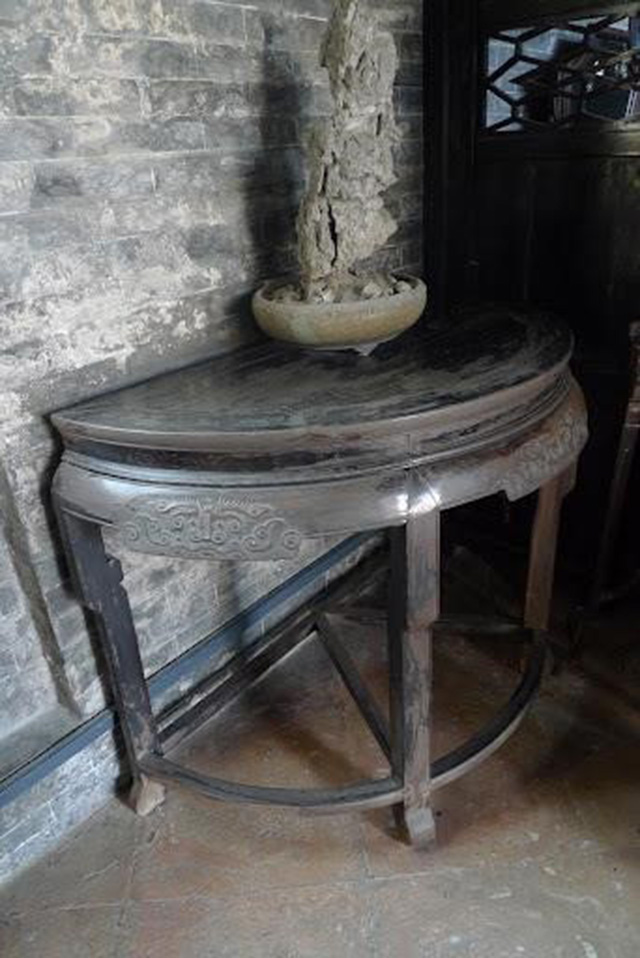
One of the ways in which the round table found a cultural niche as a dining table in the Qing period was thanks to its shape — that is, its roundness. In the eighteenth century, it was thought that dining at a round table created a sense of egalitarianism among those who gathered. This was the most notable difference between round and angular tables. While angular tables produced hierarchical seating arrangements based upon their four sides, round tables were thought to annul such differentiations. As a result, round tables were used as metaphors for equality and casualness in sociability. In a poem by the famous painter Luo Pin (1733-1799), for example, the round table – the title of the work – is deliberately compared with the square table. Set against the backdrop of Daoist sybarites indulging in sumptuous dining and merrymaking, Luo presents a provocative vision that defies existing norms of propriety and hierarchy:
No rank within the guests, like stars we often gather.
The way of heaven is circular; the moon is round for the time being
[…]
Nowadays, it is better for things to be flexible and accommodating, I only fear that a carriage with square wheels will never march forward.[1]
Such a notion evolved over the course of the round table’s history. Round tables materialized the growing eagerness to break away from strict norms and orders of social interaction in the eighteenth century. Although nowadays there are yet another set of elaborate rules that govern the use of round tables, even in the turn of the twentieth century, a quick glance at group portraits and other such photographs tells us that round tables still possess their historical meanings –equality and casualness.
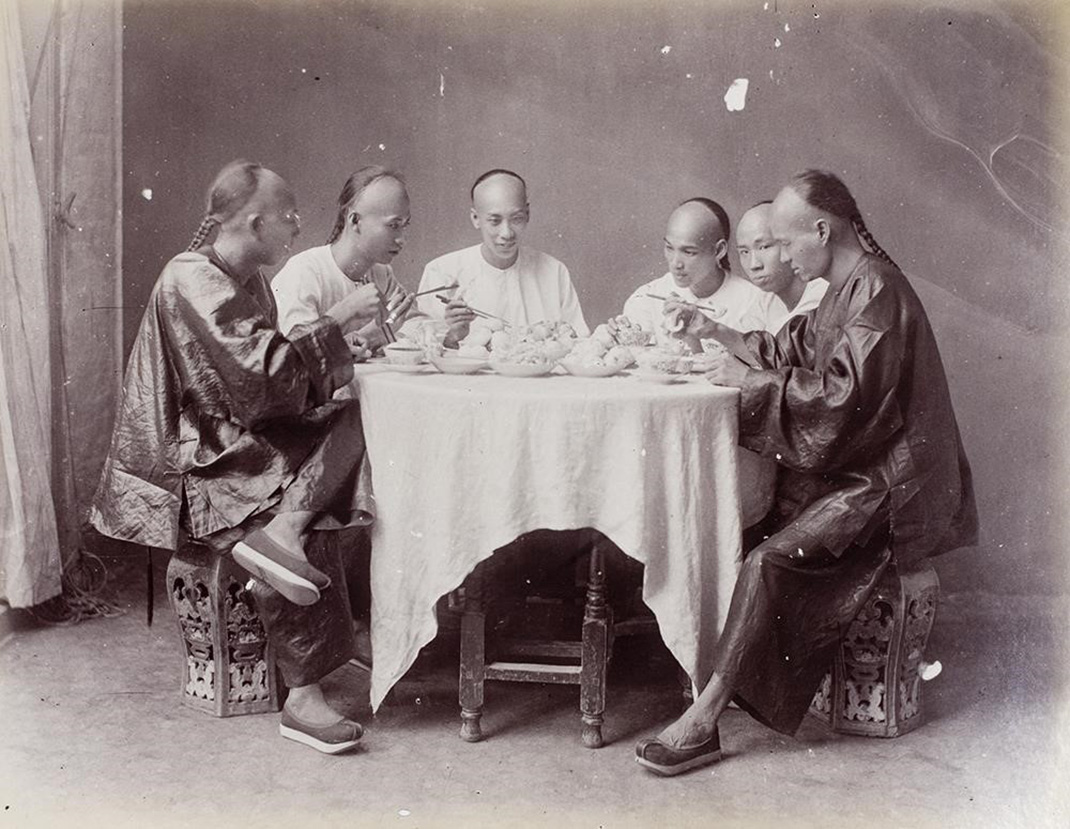
Another way in which round tables became popular was thanks to their portability. While angular tables were more stationary in both their construction and cultural contexts, round tables were designed to be more mobile. This can be seen in their joinery and materiality. Most Chinese round tables had tabletops that could be easily detached from their bases/legs. In south China, many round tables had folding leaves. Such traits meant that they could be easily set up and dismantled according to necessity. Round tables were also usually made with less valuable woods so that they could be used in the kitchen and outdoors. This, in turn, meant that their character was practical, flexible, and context-driven. Perhaps the most obvious reason, therefore, that round tables became so popular and widespread as everyday dining tables was grounded in the materials and techniques that optimized their utility.
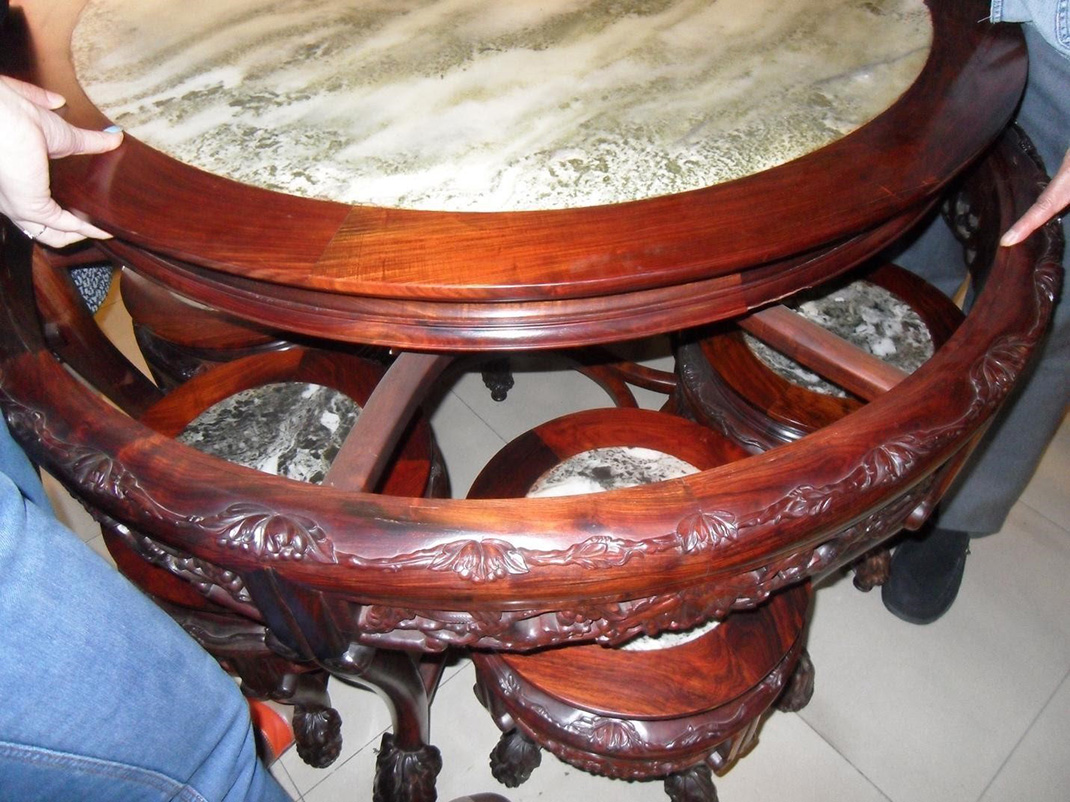
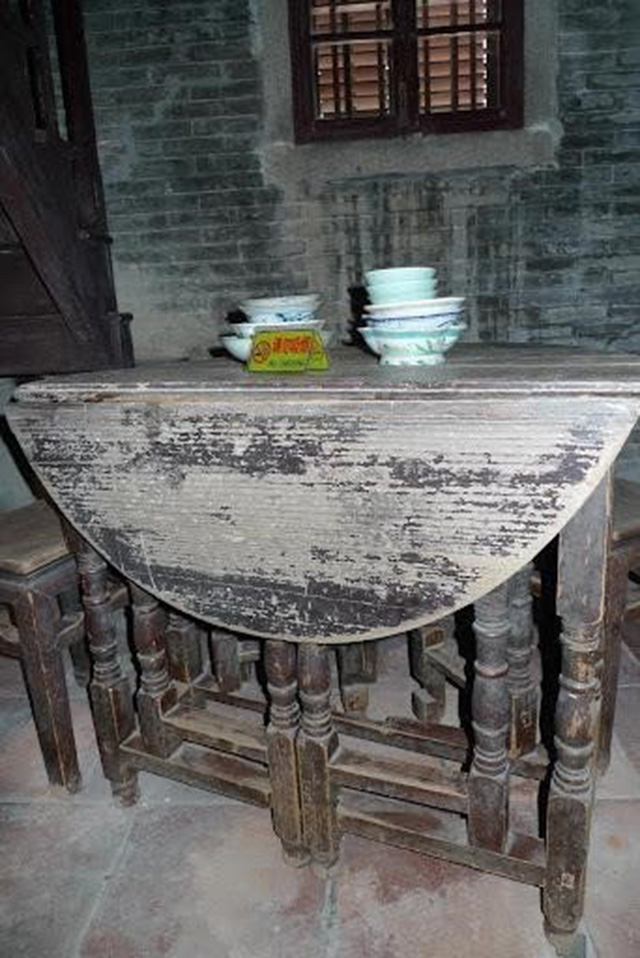
Finally, once round places a place in Chinese material culture, they also gave a new shape to existing customs and practices. In many eighteenth-century source, we can see that round tables were frequently called a tuanyuan table. Tuanyuan is a word that had many meanings at the time. It denoted roundness, reunion, completion, and repleteness. Family gatherings during major holidays such as the Spring and the Mid-Autumn Festivals gave material and bodily forms to tuanyuan. The full moon of the mid-autumn, in particular, was emblematic of the word in the sense that it stood for both reunion and harvest-time repleteness. Thus, we see many moonlike objects associated with the mid-autumn, such as the mooncakes, round-shape fruits, and of course, the round tables.
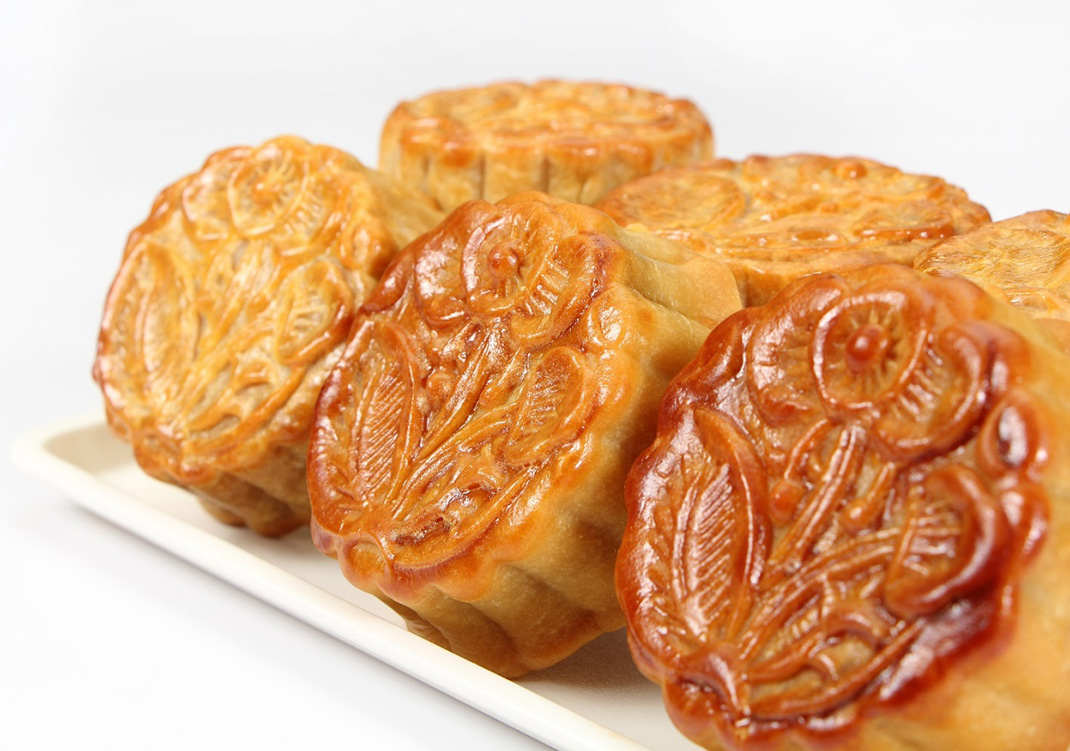
Footnote
- Luo Pin, Xiang ye cao tang shi cun (Poems from the Geranium Hall), first printed in 1796 (Yangzhou: Jiangsu ren min chu ban she, 1962), 71.
